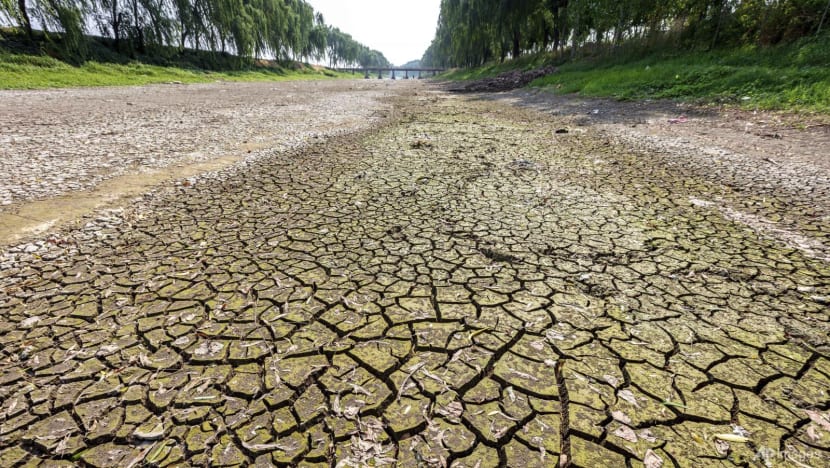Drought, heatwave threaten harvest in China’s agricultural regions
From the northwest to the east, various regions in the country are confronting parched and scorching conditions. The extreme climate has withered crops and forced local farmers to delay the planting of crops.

A view of a dried-up river in Huaxian county in central China's Henan province on Jun 15, 2024, after prolonged drought. (Photo: Chinatopix via AP)
SINGAPORE: China’s grain harvest is under threat as a record heatwave as well as drought bear down on its agricultural regions, prompting emergency responses by local authorities while local farmers voice concern.
The agriculture ministry issued an alert last week on such conditions in the northern and central regions, including parts of Hebei, Shanxi, Shaanxi, Henan, Shandong and Anhui, reported the South China Morning Post (SCMP).
The ministry warned that there was a high risk of crop seedlings being damaged in these provinces, which traditionally have high soybean and corn production.
“Severe drought conditions” have been recorded by 72 meteorological stations in 16 different cities across central Henan, affecting 63 per cent of the province’s arable land, according to Chinese news site Sixth Tone.
The province - often referred to as “China’s granary” - is a crucial agricultural hub that accounts for one-quarter of nationwide wheat output and one-tenth of total food production, the online outlet reported. It added that conditions are expected to worsen until Thursday (Jun 20).
The dry spell comes at a crucial period known as the “three summers” or “sanxia” in Chinese. Typically from mid-May to mid-June, it’s the time when farmers traditionally harvest their summer crops and plant their next crops for the autumn, according to Sixth Tone.
Local farmers in the affected areas have expressed concern. One farmer in eastern Anhui province told state-run news outlet China Daily that he was more worried about his crops than the heat.
Another farmer in Henan that Sixth Tone spoke to said the fields were “bone-dry”. He added that the soil was so hard it could barely be dug into - and even when achieved, it “crumbles away like powder”.
China’s Ministry of Water Resources has launched emergency responses for drought in eight provinces including Hebei, Henan and Shandong, reported local media.
It’s been set at level four, the lowest of the country’s four-tier system. This legally requires a team of experts to be dispatched within 24 hours and for the situation to be constantly monitored, according to SCMP.
Measures include the diversion of water to drought-affected regions as well as more water being released from reservoirs, according to a China Daily report.
These are helping to ensure adequate water supply for both agricultural and residential use during this dry spell, said China’s Vice Minister of Water Resources Chen Min as quoted by China Daily.
Further relief could also be on the horizon, Mr Chen added, as rainfall is expected over the next 10 days in some drought-affected areas.
SCORCHING HEAT TO CONTINUE
Even so, a heatwave baking parts of north and central China is expected to persist through the coming days. Temperatures could rise to as high as 40 degrees Celsius, China Daily reported.
Early last week, over 20 weather stations in the northern province of Hebei and the eastern province of Shandong posted local heat records for early June, the state-run China National Radio reported, citing the national weather office.
National Climate Centre chief forecaster Zheng Zhihai said temperatures in most parts of the country are “higher than usual, with an increased number of hot days and more frequent occurrences of prolonged hot weather”.
Beijing’s Municipal Emergency Management Bureau on Sunday issued an alert on high temperatures, with employers in the capital ordered to cease outdoor work.
Provincial authorities in Shaanxi and Henan have also urged employers to stop outdoor work to protect workers from the heat, China Daily reported.
The government is advising people to avoid outdoor activities during the high heat, and take steps to protect vulnerable groups such as children and the elderly.















